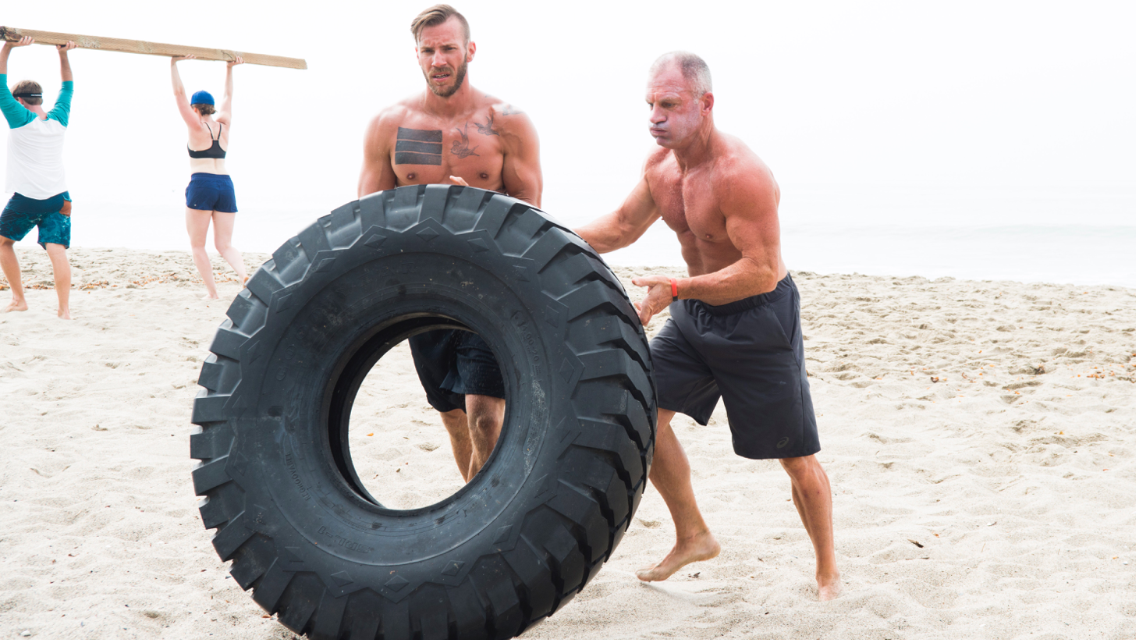This is Hard Core: The Four Horsemen of the Anatomical Core
By Cody Wayne Burkhart, Team 3FU3L Athlete, Power Speed Endurance Master Coach, and NASA Engineer
Here in the northern hemisphere summer is upon us; and as the temperatures rise, the layers start to fall off. Vanity becomes the new black once again.
Guys and gals alike, in the middle of abdominal circuits and fat-burning elliptical sessions, try to sculpt perfect six packs and carve stone ridges out of their obliques. Neat. So… remember the three little pigs and that big bad wolf? Well, imagine you’re in the market for a house and your real estate agent is trying to convince you to buy a home that has one brick wall, but the other three are made of straw because it’s way less work and, therefore, a massively lower cost. If the wolf only comes at you from the brick side, you just made the purchase of a lifetime, but if the wolf decides to surprise you at any point from the other 75% of your “casa de cheap”… well, you’re bacon.
While the story may seem silly, it’s an easy representation of your body’s core structure. We get so fixated on the glamour of the rectus abdominis (the fancy name for that photogenic washboard) that we forget about the true four walls upon which the house of our body mechanics, movement and performance is built. This does not mean that you are hereby instructed to never perform your six minutes to abs session again. Rather, I want to introduce you to the actual foundation of your core.
Imagine you replaced the middle 1/3 of a solid stick with a spring. We have all tried to balance sticks on our fingers like we are the next hit act at Cirque, but what do those dynamics look like with a soft spring? Each input we use to correct the sway of the stick gets magnified at the spring and our system loses its stability to inputs. The stick no longer becomes easy to balance. We can get lucky and make small motions and be as still as possible but that’s like saying “You are stable enough to walk three feet a minute” in the example of our core. Life does not happen at three feet/min. Life is dynamic… we need a tighter spring.
To tighten our spring we need to identify and train the four walls with the same intensity of our vanity in these summer months. It is not acceptable to be a single brick wall system because the bad wolf called the summer is coming. Training, sitting, playing with your children, accidents, sports, experiences, are all environments within which your body is meant to operate.
The four walls of the core:
- Front: Transverse Abdominis (TVA)
- The corset muscle and the innermost flat muscle of the abdomen that stabilizes the pelvis and thoracic by compressing ribs and viscera
- Back: Multifidus
- Works in tandem with the TVA to secure the pelvis and thoracic by stabilizing the vertebrae of the spine and allowing them to work more efficiently and in a more protected environment from external loading
- Top: Diaphragm
- Performs a key function in breathing, such that during contraction, there is an increase in volume in the thoracic cavity that results in a pressure difference to fill the lungs and also works to stabilize between the abdomen and the thoracic cavity at the limits of the rib cage.
- Bottom: Pelvic Floor Muscle (PFM)
- Also known as the Pelvic Diaphragm, is useful in maintenance of intra-abdominal pressure and also stabilizes the bottom of the abdomen and supports the pelvic viscera
Training each of these helps to shield the your organs, increase stability in both static and dynamic situations, positively impacts the efficient transfer of energy for both core to extremity motions and energy transfers (think driving off the ground to throw a faster pitch), and creates a pristine environment for effective breath control in any position the body may find itself. It should make sense that each yin has its yang: the TVA and the multifidus, the Diaphragm and the PFM. And without all four we are setting ourselves up for a high-risk scenario. We will surely see loads in our life, like the huff and puff of the big bad wolf, and we want our house to stand firm.
And whom would I be if I didn’t at least leave you with some support on how to actually train your core to success? Below are perfect additions to your 6-minute ab circuit:
CORE VIDEOS:
Front: Transverse Abdominis (TVA)
Back: Multifidus
Bottom: Pelvic Floor Muscle (PFM)
Top: Variable Breathing Styles (Diaphragm 1) and Thoracic Spine Lengthening (Diaphragm 2)



